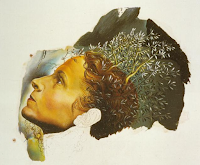
Picasso: The Maestro of Modern Art
Master of Modern Art - A Dazzling Array of Iconic 16 Artworks
Pablo Picasso, a towering figure in the realm of modern art, stands as a beacon of innovation and creativity in the 20th century. Born in Spain in 1881, Picasso's artistic genius transcended borders, reshaping the landscape of art with his groundbreaking techniques and revolutionary vision. Renowned for his prolific output and diverse styles, Picasso remains one of the most celebrated and influential artists in history.
Early Years and Influences
Born in Spain in 1881, Pablo Picasso grew up in an environment rich with artistic influences. His father, José Ruiz y Blasco, was a painter and art teacher, exposing young Pablo to the world of art from an early age. Picasso's early influences also stemmed from Spanish culture, including the works of Francisco Goya and Diego Velázquez, as well as the vibrant city of Barcelona, where he spent his formative years.




Education and Mentorship
Picasso's artistic journey formally began at a young age when he attended art school in Barcelona. Later, he continued his education at the Royal Academy of San Fernando in Madrid, where he honed his skills and experimented with various styles. While Picasso received formal training, his true education came from the mentorship of influential artists and thinkers who shaped his artistic development.




Evolution of Style
Picasso's artistic style evolved dramatically over the course of his career, reflecting the cultural and social changes of the time. From his early Blue and Rose Periods to his groundbreaking Cubist works, Picasso continuously pushed the boundaries of artistic expression. His ability to seamlessly transition between styles showcased his versatility and innovation as an artist.




Cubism and Beyond
Picasso's collaboration with Georges Braque in the development of Cubism marked a pivotal moment in art history. Cubism revolutionized traditional notions of perspective and representation, introducing fragmented forms and multiple viewpoints. Picasso's Cubist works, such as "Les Demoiselles d'Avignon," challenged artistic conventions and paved the way for future movements.




Career Milestones
Throughout his illustrious career, Picasso achieved numerous milestones that solidified his status as a leading figure in the art world. From his first solo exhibition in Paris to his groundbreaking collaborations with fellow artists, Picasso's career was marked by critical acclaim and commercial success. His works garnered international recognition, establishing him as a prominent cultural icon.
Exhibitions and Shows
Picasso's impact extended beyond the canvas through his participation in key exhibitions and shows. From major retrospectives to intimate gallery displays, Picasso's works captivated audiences worldwide. His solo exhibitions attracted crowds of admirers, showcasing the breadth and depth of his artistic vision.
Publications and Media Presence
Picasso's influence transcended traditional art spaces, reaching audiences through publications and media appearances. His artworks graced magazine covers, art books, and newspapers, solidifying his reputation as a cultural luminary. Picasso's interviews and televised features offered insights into his creative process, captivating viewers around the globe.
Legacy in Collections
Picasso's legacy lives on through the extensive collection of museums, galleries, and private collectors worldwide. His masterpieces adorn the walls of prestigious institutions, including the Museum of Modern Art in New York and the Musée Picasso in Paris. Picasso's works continue to inspire art enthusiasts and scholars, preserving his legacy for future generations.
Artistic Philosophy
At the core of Picasso's artistic philosophy was a relentless pursuit of innovation and experimentation. He approached each artwork with a sense of curiosity and fearlessness, pushing the boundaries of artistic expression. Picasso's works explored diverse themes and subjects, reflecting his ever-evolving perspective on life and society.
Ongoing Impact and Future Ventures
At the core of Picasso's artistic philosophy was a relentless pursuit of innovation and experimentation. He approached each artwork with a sense of curiosity and fearlessness, pushing the boundaries of artistic expression. Picasso's works explored diverse themes and subjects, reflecting his ever-evolving perspective on life and society.
Frequently Asked Questions
What is Picasso best known for?
Picasso is celebrated for his groundbreaking role in co-founding the Cubist movement, revolutionizing modern art.
Where was Picasso born and raised?
Picasso was born in Spain in 1881 and spent most of his adult life working as an artist in France.
How many artworks did Picasso create?
Picasso created over 20,000 paintings, drawings, sculptures, ceramics, and other artistic pieces throughout his prolific career.
What is Cubism, and how did Picasso influence it?
Cubism, pioneered by Picasso, redefined European painting and sculpture by abstractly rearranging subjects and objects, inspiring offshoots like Futurism and Dadaism.
What art styles did Picasso invent?
Picasso is credited with inventing constructed sculpture and co-inventing the collage art style, revolutionizing the artistic landscape.
What is Picasso's impact on plastic arts?
Picasso's innovative approach to sculptural artwork and manipulation of materials led to significant advancements in painting, sculpture, printmaking, and ceramics.
Where can one find Picasso's artworks today?
Picasso's masterpieces are housed in prestigious collections worldwide, spanning museums, galleries, and private collections.
What defines Picasso's artistic philosophy?
Picasso's creative genius and philosophical approach are characterized by his relentless experimentation and exploration of diverse themes and mediums.
How does Picasso continue to influence contemporary art?
Picasso's enduring influence transcends generations, inspiring contemporary artists and shaping the future of artistic expression.
What is Picasso's lasting legacy in the art world?
Picasso's legacy as one of the greatest artists of all time is immortalized through his unparalleled contributions to modern art, destined to inspire generations to come.

Pablo Picasso
Pablo Picasso Spanish Artist
Conclusion
Pablo Picasso's indelible mark on the art world is undeniable, transcending time and geography to become a timeless icon of creativity and innovation. From his humble beginnings in Spain to his meteoric rise as a trailblazer of modern art, Picasso's journey epitomizes the power of artistic vision and relentless experimentation.
Explore more Spanish Artist
Courtesy, Credits and Thanks
Explore more about Artist Pablo Picasso
en.wikipedia.org: Explore the life and art of Pablo Picasso, a pioneering figure in 20th-century art history.
www.pablopicasso.org: Immerse yourself in the world of Pablo Picasso's masterpieces and artistic evolution.
 Salvador Dalí
Salvador Dalí Vicente Romero Redondo
Vicente Romero Redondo Peter Bojthe
Peter Bojthe Explore more Spanish Artist
Explore more Spanish Artist






